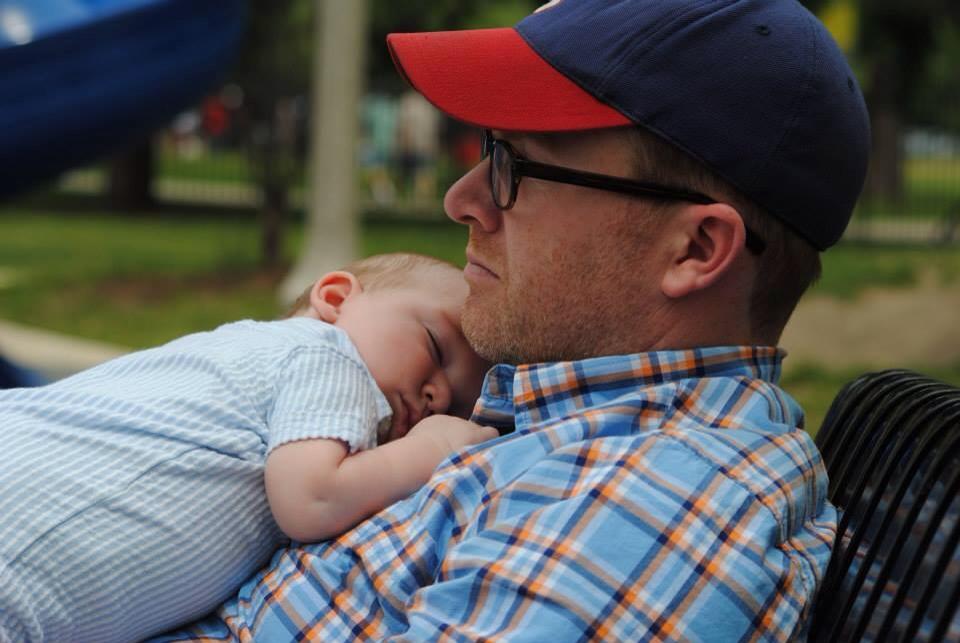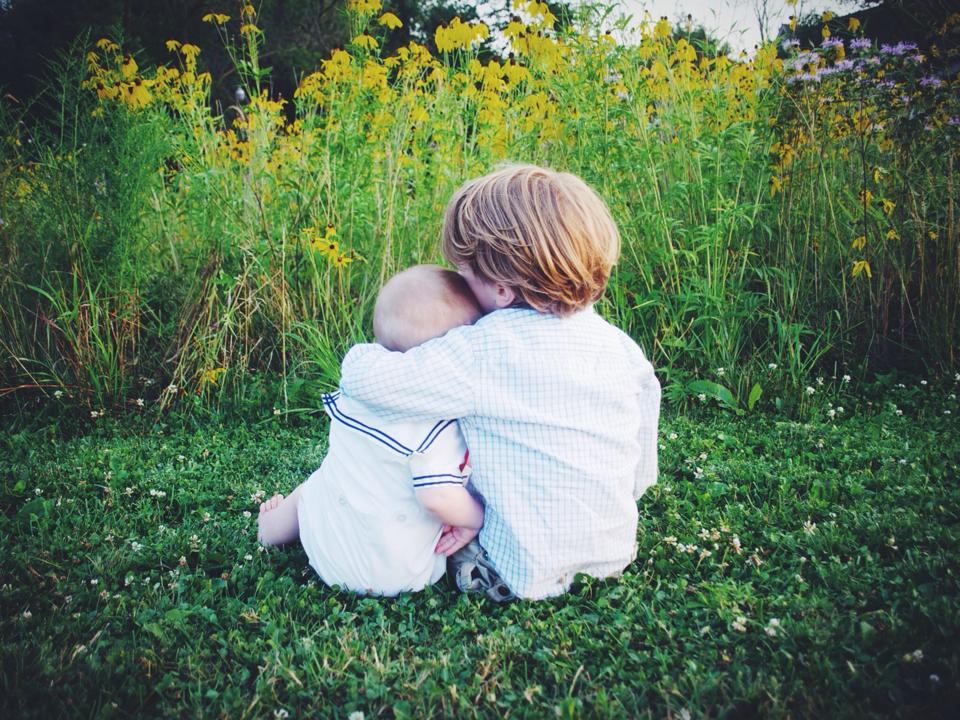Experts often point to early secure attachment as one of the key reasons why babies thrive. Babies who are securely attached to their parents show gains in all areas of development—physical, cognitive, social/emotional and so on. Children who show early secure attachments also later show higher IQ scores and more positive, pro-social peer interactions overall. Indeed, how a parent interacts with their young baby is often seen as setting the stage for how their child will then interact with persons in all of their current and future environments. Additionally, insecure attachments are consistently linked with factors such as poor school performance, unemployment, divorce, financial difficulties and a myriad of other negative outcomes. ž
Psychologists report that humans have a fundamental need to feel socially connected to, loved and respected by other people. This need starts early on and attachment is often thought of as the child’s first emotional bond to one or more caregivers. Furthermore, the quality of infant attachment is considered to have far-reaching effects on a child’s development. Even in cultures where extremely communal rearing arrangements are present (e.g., a pygmy group called ‘the Efe’ in Zaire), there are some signs of a central attachment from abyeah out 6 months of age, when infants begin to insist on being with their own mother or show preference for their own mothers when previously they showed no single central attachment (Tronick et al,1992). Clearly attachment is a central feature of strong parent child relationships and is of critical importance in both the physical and mental well being of children. So how can we ensure that secure attachments are formed? The following article will outline key ways a parent can foster secure attachments with their little ones thus giving them the best head start to having healthy interpersonal relationships in adulthood.
1. Change diapers.
Interestingly, the strength of a child’s attachment to his/her father can be predicted by how many diapers a dad changed in a typical week (Ross, Kagan, Zelazo , & Kotelchuk, 1975). The more diapers changed, the stronger the attachment. So, for those of you fathers who still haven’t ventured into the 21st century when it comes to childcare, it’s time to step up. There’s more at stake here than how annoyed your partner will be if you don’t do your fair share in this department.
2. Be in close physical proximity to your new baby.
This may sound obvious to most of us, but as soon as your child is born, he or she uses social signals (e.g., looking at caregiver, crying) to elicit care. In the first couple of months, a newborn will respond to all adults in much the same way, but the foundations of attachment are being formed. Even at this very young age, infants learn to recognize familiar people through faces, voices, smells and characteristic behaviors. Physical closeness will aid the newborn’s ability to recognize the key caregivers in his/her life. This physical closeness and responding to these early social cues by making eye contact with your baby and responding to his/her cues by providing necessary care strengthens the bonds between parent and child. The more often you are physically close to your child, the quicker you will be to recognize and respond to his or her cues.
3. Smile at your baby.
Between the ages of two and six months, infants can recognize and smile selectively at people they know best. Smile back! This will strengthen the intimate relationship you have with your little one. Babies at this age will continue to accept comfort from unfamiliar adults, but they start to show a preference for those that are involved in their day to day life. Smiling at your baby also reinforces this highly pro-social behavior and makes it very likely that your baby will smile at lots of people and those people will in turn respond very favorably to your child.
4. Be sensitive when your baby shows signs of anxiety.
Between the ages of 7 months and 2 years, babies will show special preference for a small number of familiar caregivers. They will also demonstrate unmistakable attachment behaviors (reaching out, cooing, smiling, protesting when separated). This is also about the time when stranger anxiety or “making strange” first appears.
Be sensitive when your child displays anxious behavior when separated from you. This does not mean that you cannot ever leave your child, but do recognize “stranger anxiety” as a necessary safety behavior which is entirely appropriate for your child’s developmental stage. It is thus a good idea to never leave your child with complete strangers. It is also a good idea when making changes to your child’s normal routine—particularly if a new person is going to be caring for them—to plan that the new person will be present during their normal routine for a couple of occasions before you leave your little one with the new person.
You may also then wish to bring your child to visit the location where the new caregiver will be minding your child so that the location will not be distressing. So this means that your child will have some time to adjust to this new person, when you are still present, and will know that this new person is not a stranger. If you visit the location also, then the new location will have some familiarity for your child and should minimize the distress that your child may have. On the first occasion that you are leaving your child with a new person, only stay away for a short period (i.e., an hour or two) and then you can increase the time from there.
Your child may still fuss and cry the first time you leave them. You should always respond sensitively with hugs and kisses and reassurance, but you will need to still leave, even if it is just for a short period. Otherwise, your child may not learn to tolerate the upset and frustration of you leaving, which, naturally enough, you will eventually have to do. However, if you baby step this process in a slow and steady manner, your child will feel securely attached to you and will be confident tackling new situations, new transitions and new people in their lives.
5. Maintain a consistent routine.
The formation of attachment has been likened to a dance, in which both partners practice their routine to build a reciprocal relationship of understanding (Isabella, 1993). These synchronized routines are formed during vital everyday interactions between infant and caregiver. This routine should include sensitivity to an infant’s emotional & physical state (e.g., not over stimulating when baby is tired). It does not take long before you and your baby will learn how to interpret each other’s signals. This process happens more quickly when you maintain a consistent routine. There are, of course, always things which interrupt your routine. However, research shows that babies and young children do best (in school, in physical health, in mental health and even in brain development) when they know what to expect and what is expected of them.
6. Be aware of characteristics that may affect the quality of the attachment relationship.
Infants who have early physical difficulties (e.g., colic, reflux, low birth weight, visual difficulties, chronic ear infections or any other condition which makes them uncomfortable or less responsive than other babies) will likely be harder to soothe or engage with. These babies may not always respond to the caregiver in a positive or typical manner. This may elicit frustration, anger and negativity on the part of the caregiver. So try to get to the bottom of these issues early on to minimize the baby’s discomfort and allow more positive interactions between parent and child. Try also to be sensitive to a baby’s individual needs by, for example, allowing your infant an active role in determining the onset, pacing, and end of feeding. (Yes people, I mean feeding on demand!). This will help your baby identify a mother as being generally responsive to her babies needs even under difficult circumstances.
Similarly, if parents are having difficulties with physical or emotional illness or if depression, alcoholism, financial difficulties are present, these issues will naturally affect how parents feel about their babies. If any of these issues are present, try to get support early on so as to avoid damaging your relationship with your child. A new baby can place a great strain on any situation and sleep deprivation is a consistent problem when there are young babies in a home. This may compound any physical or emotional stressors parents are already facing. Be aware too that if one parent is suffering with physical or emotional difficulties, having a sensitive and responsive other parent can mitigate the effects of one parent being unavailable, whether that be for physical, mental, financial or any other reason. So while two heads are better than one in most situations, one head is better than none in this situation.
7. Be flexible.
While on the one hand, babies respond best when they know what to expect, it is also important to model a flexible style of parenting too. Recognize that your baby may need you more than usual during difficult times like illness, teething, adjusting to new situations, etc. Modelling flexibility will help your child learn how to adjust to the ever changing world around them. When your baby sees you responding flexibly to new or unexpected situations, he or she will pick up your cues and follow suit. ž
In summary, attachment theorists suggest that early attachment sets the stage for later relationships. A baby’s experiences with primary caregivers provides a mental representation of what relationships with other people are like. This unconscious understanding influences how children relate to other individuals, including teachers, friends, cousins, siblings, bosses and many others. Furthermore, studies repeatedly show correlations between early attachment and cognitive and social adjustment. So securely attached kids do better in school, work and in social circles. This means that they are stronger in terms of social, emotional and intellectual development. žChildren who make strong attachments in very early childhood, typically are: more popular with peers and adults; —are less likely to be bullied, demonstrate less aggression, are more persistent in problem-solving situations, demonstrate autonomy and are better able to regulate their emotions. On the flip side, Carlson et al., 2004 have noted that those with insecure attachments, particularly avoidant attachments; have less positive and less secure friendships in adolescence, are more likely to become sexually active earlier and even to engage in riskier sex. In 2005, žSroufe et al noted that children with histories of insecure attachment showed some kind of deviant behavior pattern (e.g., —Isolation from peers, passivity, hyperactivity, aggressiveness). Only a few of those with secure attachments showed any of these patterns.
The research paints a picture of children with secure attachments growing up as balanced sensitive confident and trusting individuals; but for those whose early attachment was not as secure, the outcomes look much less positive. žSecurely attached children expect people to be trustworthy, because this is what they have experienced. In contrast, insecurely attached children expect the opposite based on what their experiences have taught them. So while the early years of establishing secure attachments may seem like only brief fleeting moments, these early moments may account for how your child behaves throughout his or her lifetime. So by all means, you should enjoy these moments, but whatever you do—make them count!
Featured photo credit: Shannon O’Brien via shannonrosephotography.weebly.com














































